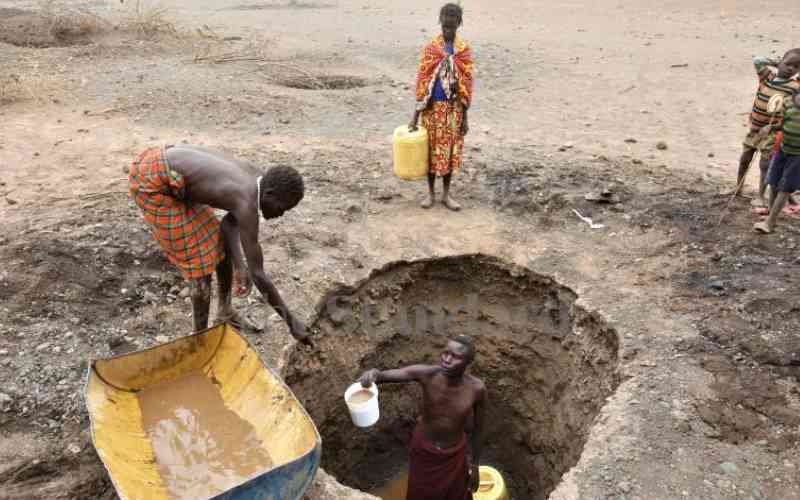
The Horn of Africa could be on the brink of more severe droughts due to ongoing human-induced global warming.
In a detailed study recently published in Nature Journal presents an unsettling prediction. The findings are based on a reconstruction of hydroclimate variability for the past 75,000 years reconstructed from lake sediment.
According to the study, human-caused climate change is expected to affect the way water moves around the Earth (that's the hydrological cycle). This will be a big deal in places with warm climates, like the tropics, where farming depends a lot on rainy seasons called monsoons.
As a result, the Horn of Africa, located in the most eastern part of the African mainland, has experienced more frequent drought conditions in recent years.
However, the research reveals that this is in contrast to climate models that have suggested precipitation in the area should increase alongside rising temperatures.
To explore these discrepancies, scientists analysed sediment from Lake Chala located in Kenya and Tanzania to explore interactions between temperature and moisture over the past 75,000 years.
They found that during glacial conditions, there was a positive relationship between moisture and temperature in the region.
But when the Holocene started about 11,700 years ago, temperatures were like they are now, and the air had more than 250 parts per million of carbon dioxide. At that point, the connection between temperature and moisture changed. As temperatures went up, things became drier instead of wetter.
The authors suggest this indicates the region crossed a tipping point where the positive influence of temperature on evaporation became greater than its effect on precipitation.
Led by Allix Baxter and Dirk Verschuren the authors indicate that their results show that under continued anthropogenic warming, it is likely the Horn of Africa will experience further drying conditions.
Back in the icy times, the link between temperature and moisture was evident in the region as observed by professor Raphael Kapiyo Prof Raphael Kapiyo, an environmental scientist at Maseno University He said, "In the past, we saw that temperature and moisture worked hand in hand to shape our climate. This research confirms that old pattern."
“The implications of this study are grave for our region. We have already witnessed a distressing increase in droughts, and these findings reinforce our fears of a worsening situation," Kapiyo stated.
About 50 million people in the Horn of Africa and 100 million in neighbouring regions have been directly affected by the drought. The situation is critical, with up to 20 million people facing acute food insecurity and potential famine.
Since October 2020, the region has been experiencing its worst drought in 40 years. The prolonged dry spells, coupled with brief and heavy downpours causing flash floods, have characterized the crisis. The rainfall levels have remained below normal for five consecutive seasons.
With five consecutive years of insufficient rainfall, the region is facing its most severe drought in four decades.
Over 4.35 million people require immediate humanitarian assistance, while 180,000 refugees have fled Somalia and South Sudan to seek refuge in Kenya and Ethiopia, both of which are also grappling with the drought.
According to a rapid analysis by an international team of climate scientists from the World Weather Attribution group shows that the region's agricultural drought, which has left over 20 million people at risk of acute food insecurity, would not have occurred without the effects of greenhouse gas emissions.
Addressing the root causes of vulnerability and increasing investment in adaptation measures that are robust to both dry and wet extremes is critical to avoid future extreme weather events from becoming disasters.
Cheikh Kane, Climate Resilience Policy Advisor at the Red Cross Red Crescent Climate Centre, emphasised the importance of taking action to address the root causes of vulnerability and increase investment in adaptation measures that are robust to both dry and wet extremes, which are the norm in this region.
"We need to reinforce the things that are working, including formal and informal social protection mechanisms, early warning systems, and effective drought management, while looking for ways to reduce the drivers of vulnerability, including state fragility and conflict, environmental degradation, rain-dependent livelihoods, poverty and marginalisation," he said.
The researchers say these findings are a strong sign that if human-caused warming keeps going, the Horn of Africa will face even drier times ahead. They stress that climate models need to understand how the land and air work together when predicting how the weather will be in tropical places.